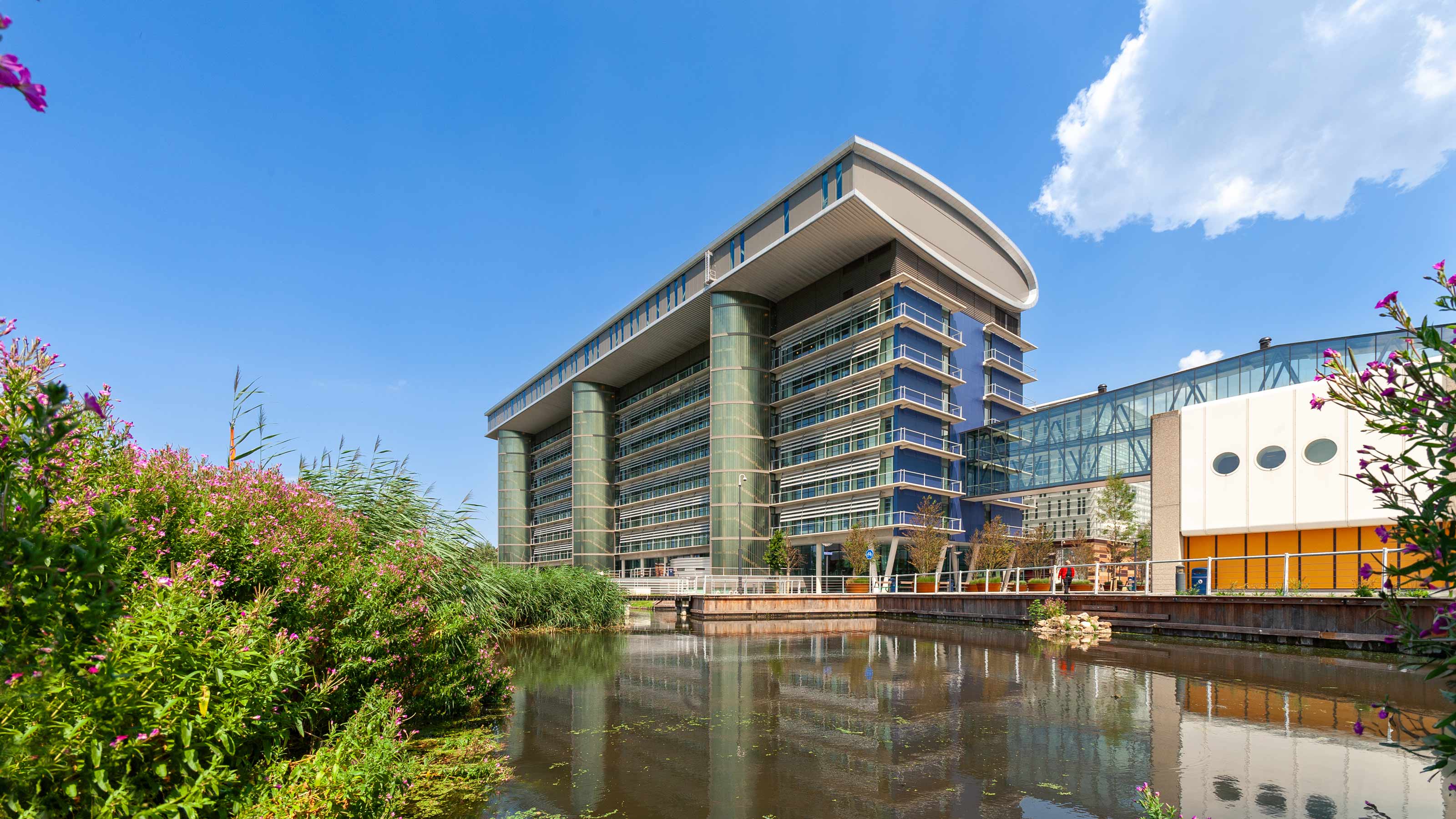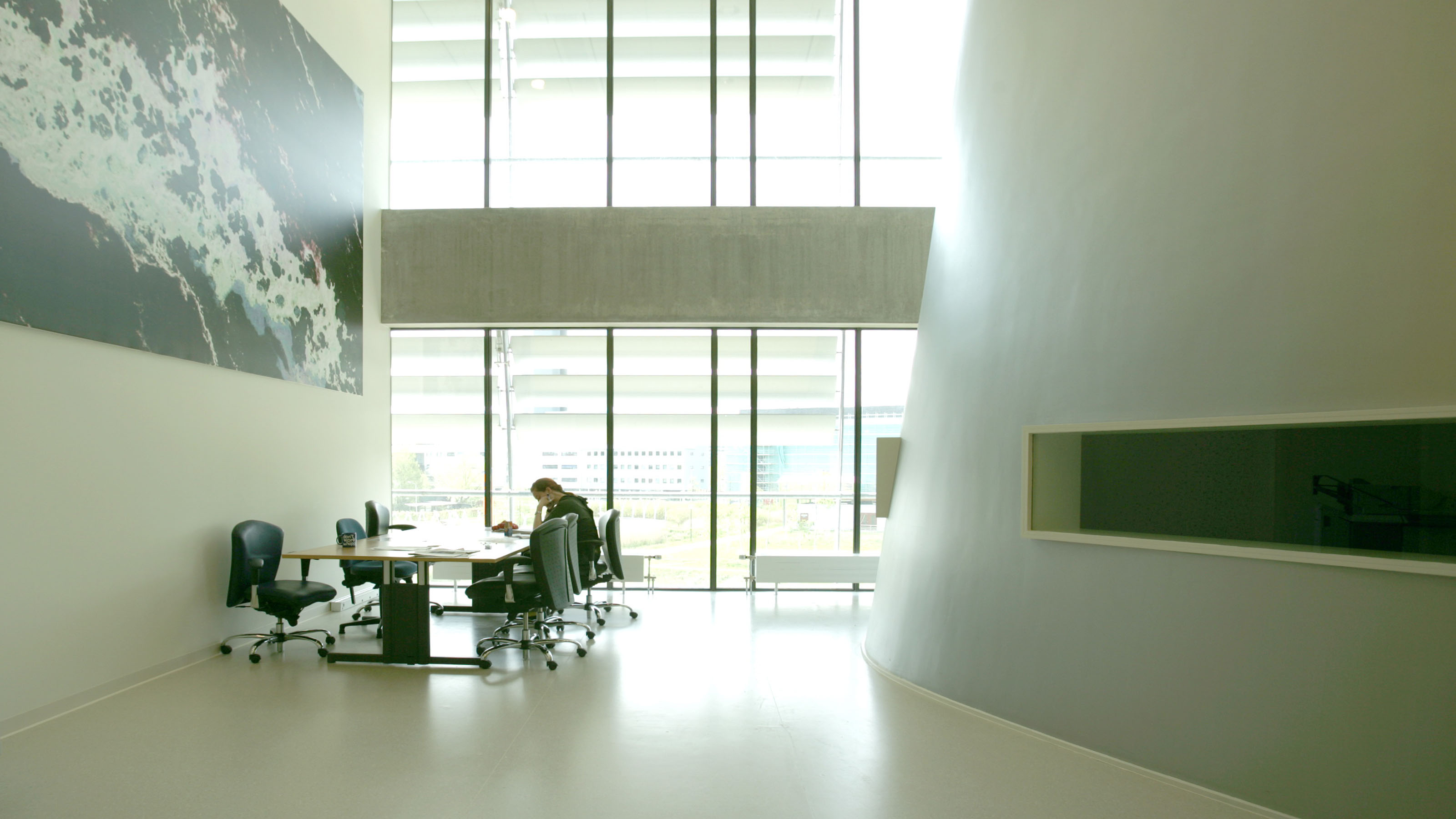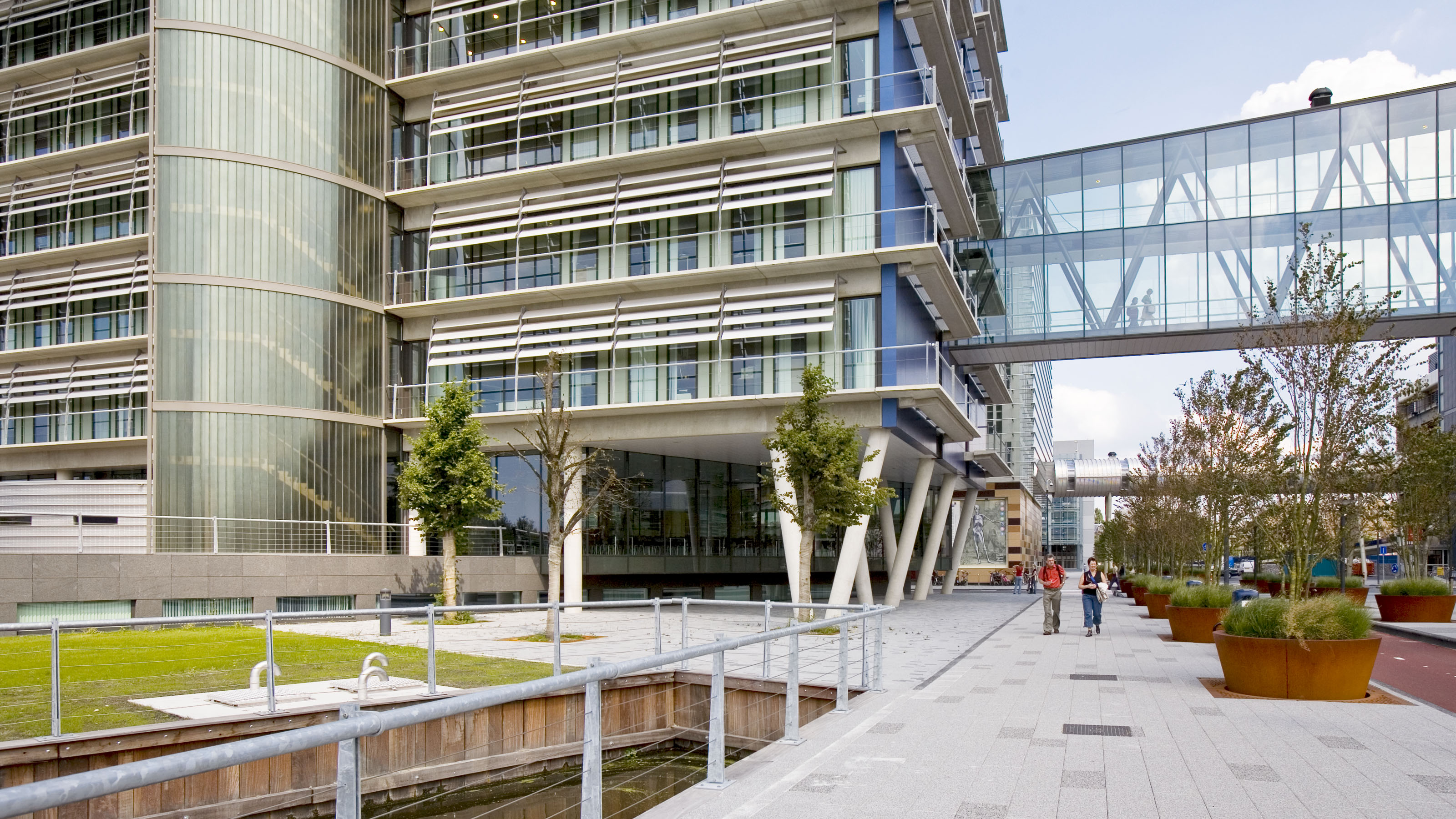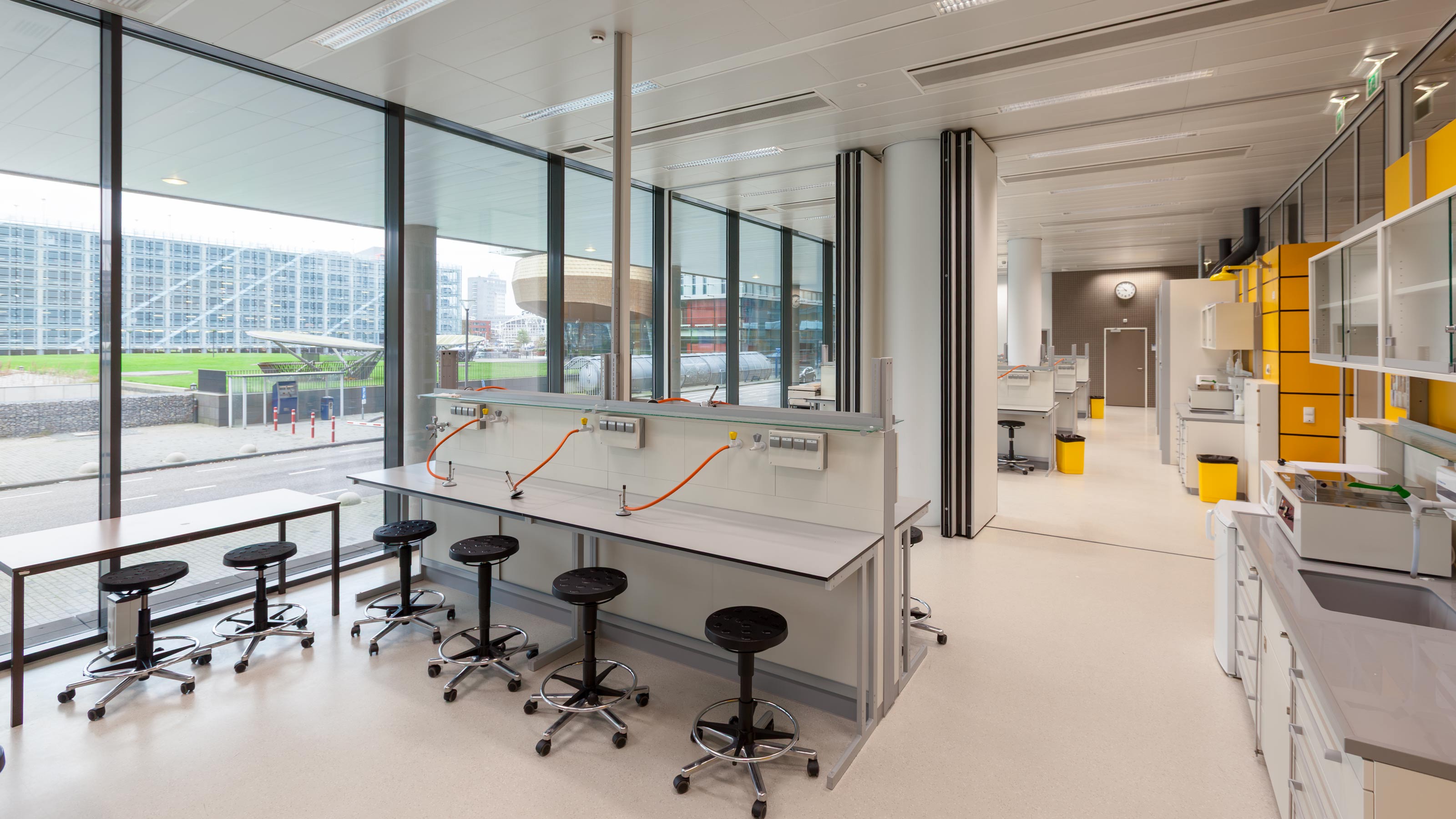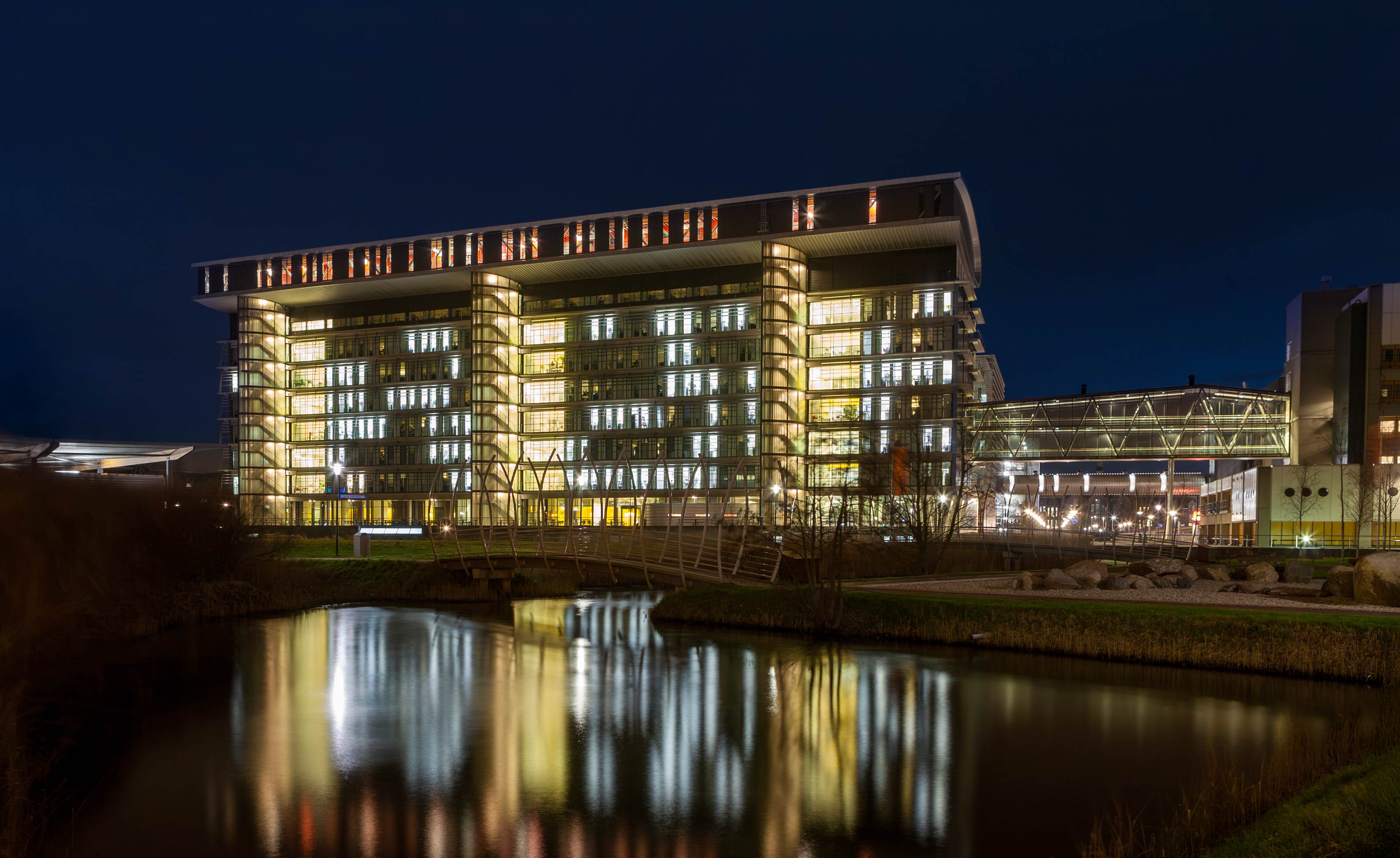
LUMC Research building
Laboratory and practical teaching spaces for Leiden University Medical Centre, Leiden
Flexible, complex and innovative
Thanks to a modular structure and flexible laboratories, the Research Building can easily respond to the continuous changes within scientific research.
With its unique research practice ranging from fundamental biomedical science to applied clinical research, LUMC is among the world’s leading institutions. Conducting scientific research is highly dynamic, which is why the design is based on a high degree of flexibility and modularity. As a result, the building can be easily adapted to new user requirements with minimal effort.
Knowledge sharing and interaction
Knowledge exchange and collaboration are central to the Research Building. Users experience a sense of openness, thanks to atria and daylight zones that create spaciousness around lifts, staircases and central amenities. This layout facilitates informal encounters and encourages collaboration among students, researchers and staff. Laboratories and workspaces can be created almost anywhere due to the cleverly chosen dimensions of the primary structure. This supports multidisciplinary work and the sharing of expertise.
A Pleasant environment for work and study
The building’s clear layout ensures that all functions are easy to locate and accessible. The laboratory floors are organised into three zones: along the external façades are laboratories and offices, while the central zone accommodates supporting and technical functions. This results in a distinct separation between work, study and meeting areas on the one hand, and research or specialist spaces on the other. Such an arrangement contributes to the efficiency, safety and comfort experienced by users.
Openness and privacy
The transparent main floor provides space for communal and public functions such as lecture rooms, meeting areas and the restaurant. The more private and specialist facilities are housed in the basement and on the upper floors: dissecting rooms and technical workshops are located in the basement, whilst laboratories for biomedical, biochemical and biophysical research are distributed from the first to the sixth floor. This zoning makes it possible to meet a wide range of requirements regarding accessibility, use and safety, supporting both focused research and the exchange of knowledge.
High-tech appearance
On a daily basis, users experience an inspiring, innovative environment characterised by high-tech features such as the façade shading, escape and window cleaning balconies, and the cantilevered top floor. Owing to its industrial and demountable design, the building can easily adapt to changing requirements and future developments in research and education. The combination of flexibility, aesthetics and functionality contributes to both job satisfaction and the performance of all those working in the building.
